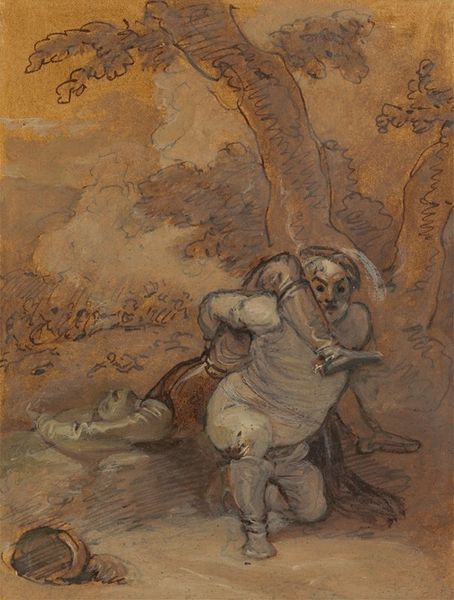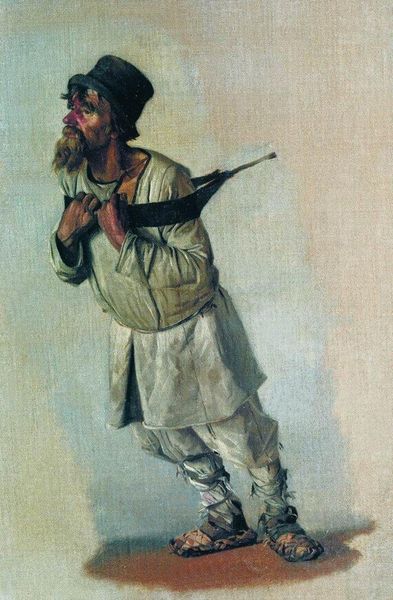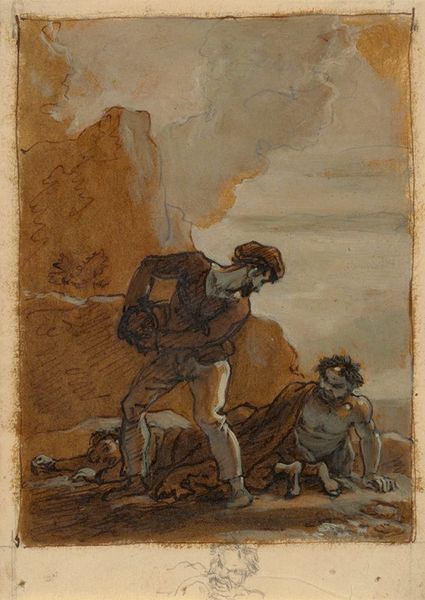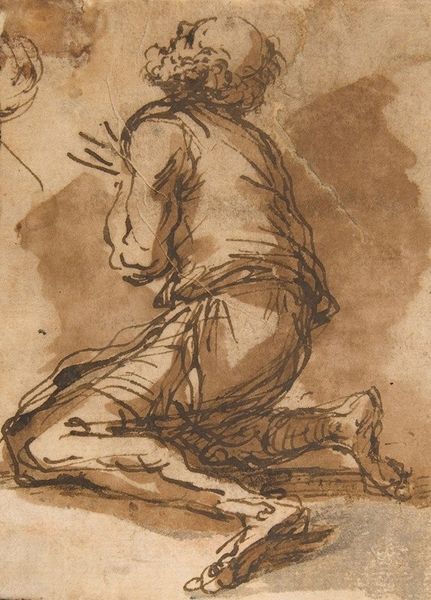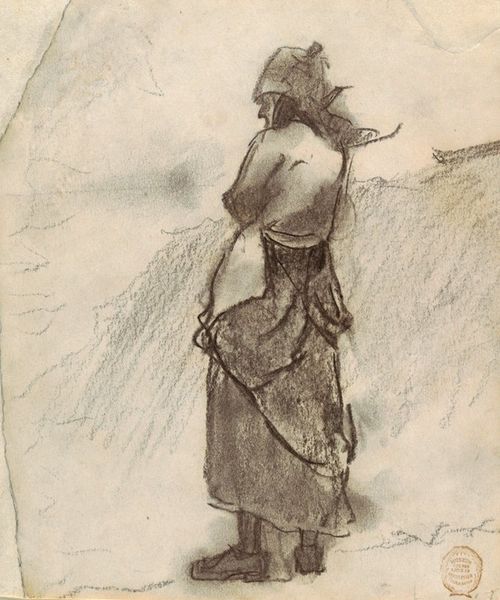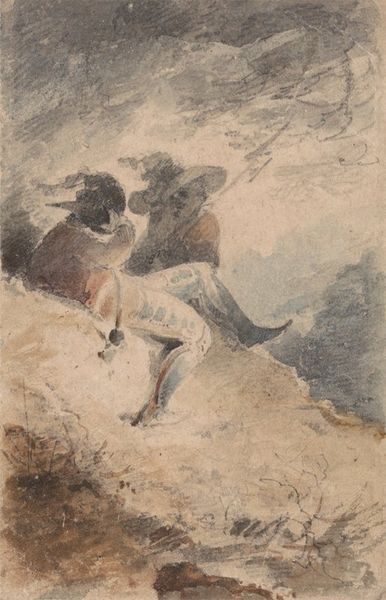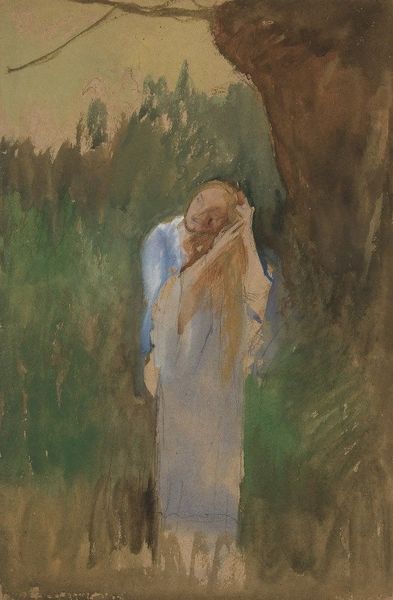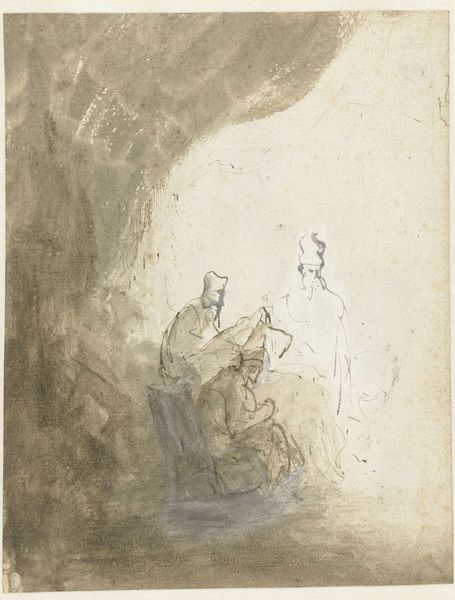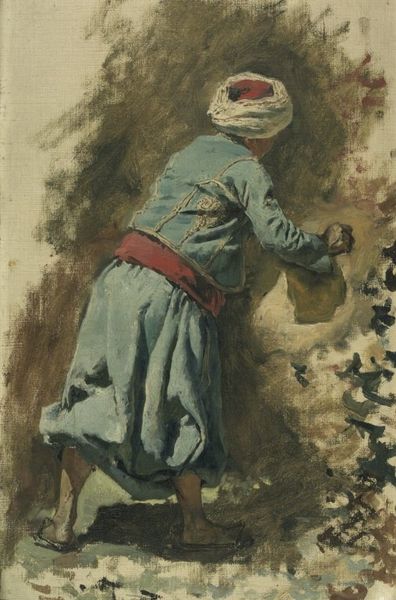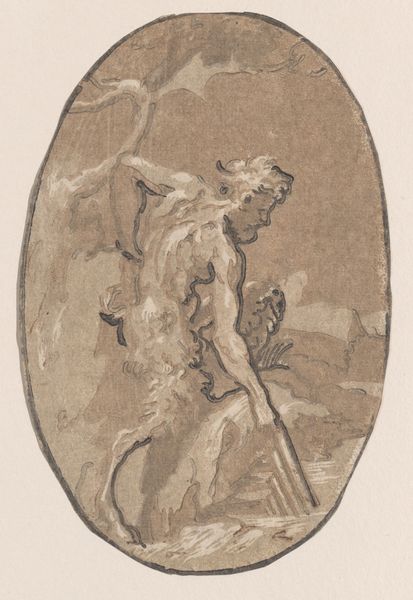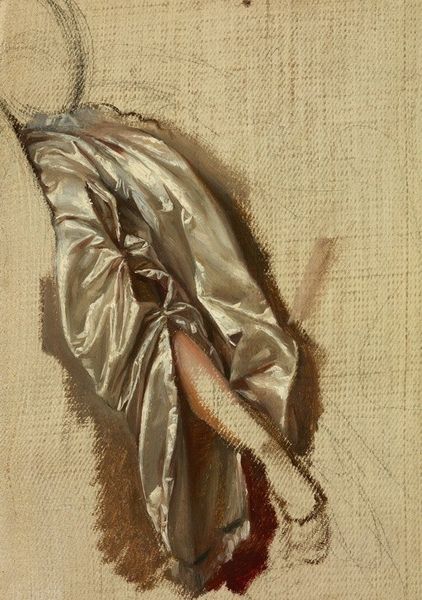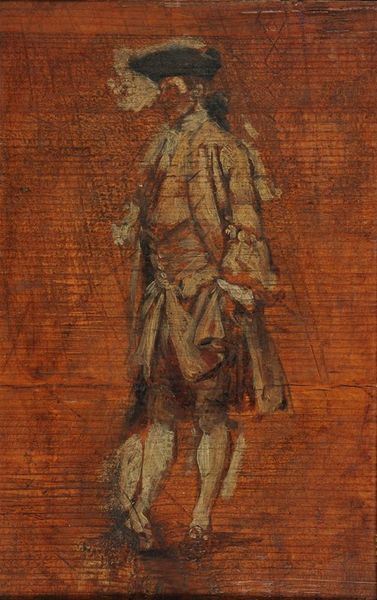
drawing, plein-air, watercolor
#
drawing
#
figurative
#
impressionism
#
plein-air
#
landscape
#
figuration
#
watercolor
#
watercolour illustration
#
watercolor
Copyright: Public Domain: Artvee
Editor: So this is Frederic Remington’s "Carrying Fodder," made in 1889 using watercolor and drawing. I’m really struck by the sheer weight of whatever that figure is carrying; you can almost feel it pressing down on him. How do you interpret this work? Curator: What I see is a powerful commentary on labor and the human condition. Look at the historical context: Remington often depicted the American West, but this seems to capture a more global, universal scene of working-class struggle. Does the fodder become a symbol? What does it represent about the socio-economic hierarchies of the late 19th century? Editor: I hadn't considered that. I was focused on the individual figure. So you’re saying it invites us to consider not just this one worker, but the entire system that relies on his labor? Curator: Precisely. The impressionistic style softens the edges, almost romanticizing the scene, but that burden is still evident, isn’t it? I think it’s essential to recognize that even depictions that might seem celebratory can be laced with critiques of power. How does the portrayal of his clothes, of his bare feet change our view? Editor: It makes the scene more human, less about the "Wild West" and more about just a regular man, and that shift challenges preconceived ideas about Remington. Curator: It absolutely does. It challenges our own expectations as well, revealing the narratives that are often overlooked. Editor: I’m walking away thinking much differently about Remington than I had expected. This one picture packs quite the historical and political punch. Curator: Indeed! It goes to show how art, even seemingly simple depictions, can become sites of profound social and political engagement.
Comments
No comments
Be the first to comment and join the conversation on the ultimate creative platform.
